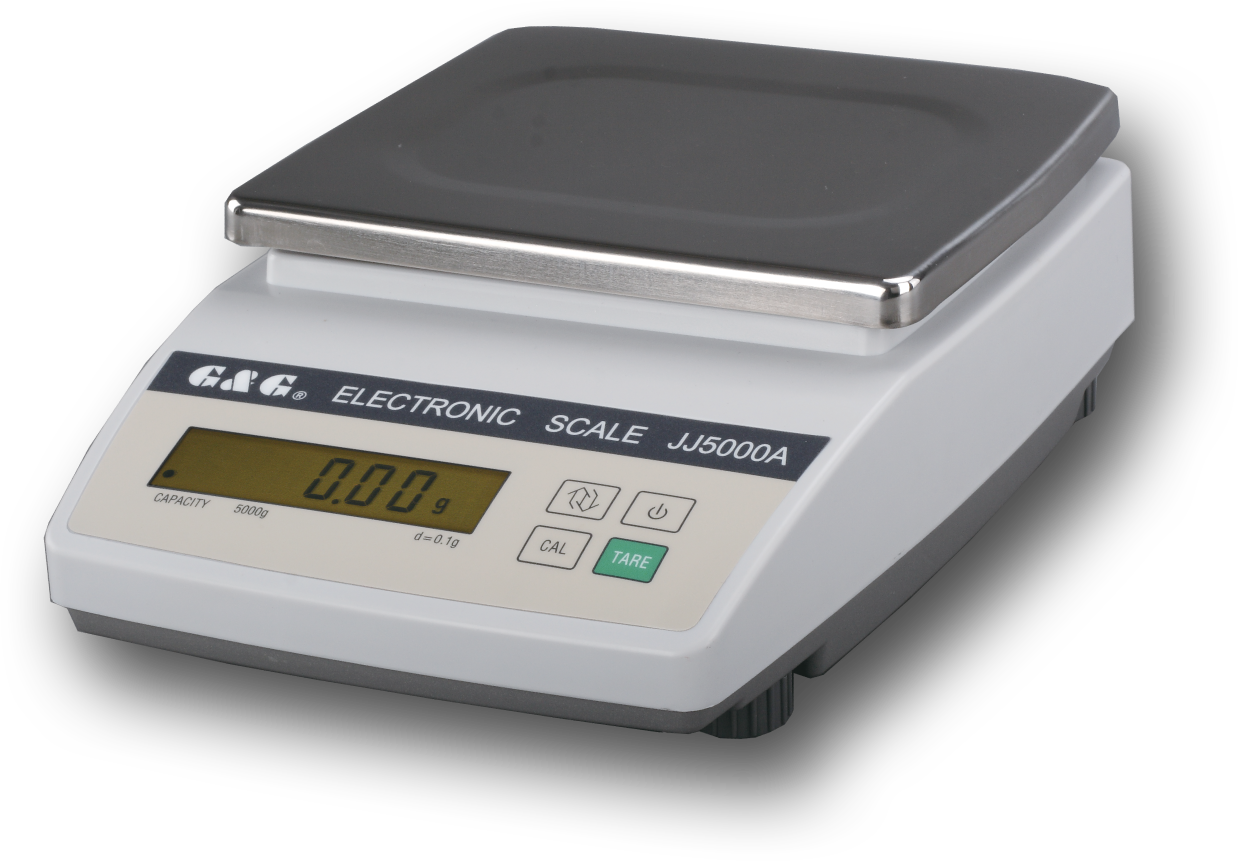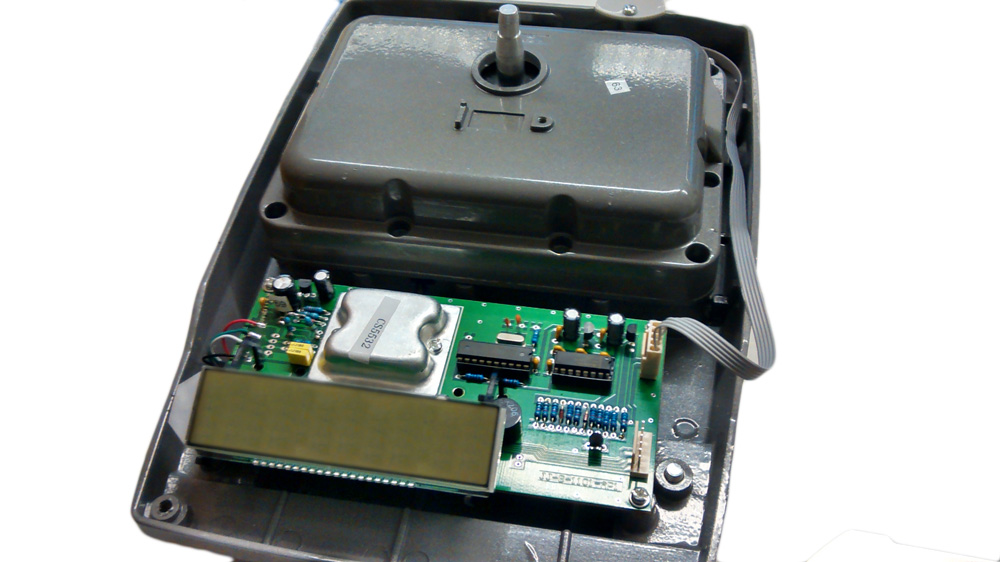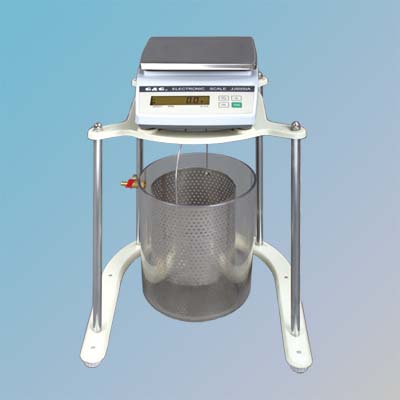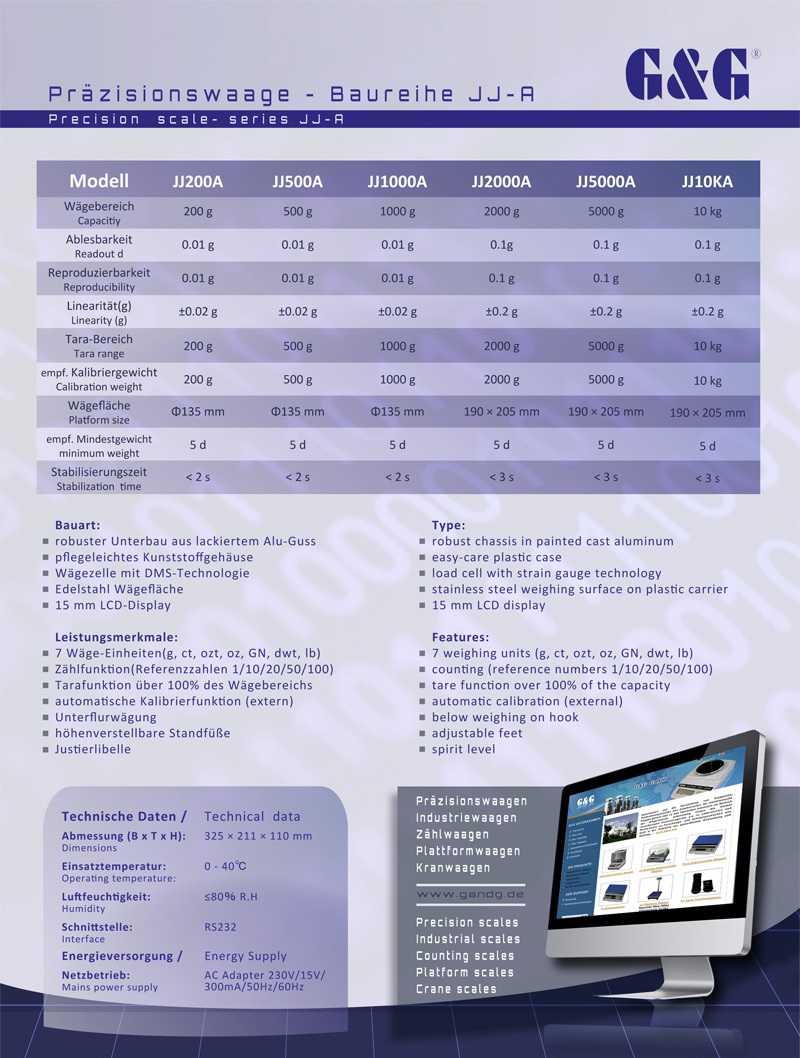
JJ-A series balances have been developed for daily use in the laboratory. It is the cheapest version, which is supplied with an encapsulated load cell and evaluation electronics. In addition to the cast aluminum substructure, under the white upper shell made of impact-resistant plastic there is another several millimeter thick metal shielding to filter out these most important components in order to filter out interfering radiation.
You probably know the effect from a radio that you put a cell phone next to and call. The radio waves are normally emitted by the mobile phone's antenna, received by the transmission mast a few kilometers away, and the resulting electronic signals are converted into a conversation.
The radio radiation also affects the antenna of the radio. There is an audible crackling in the loudspeaker.
A scale does not have an antenna, of course, but this electrical radiation affects all conductive components such as cables and sensors in all electrical devices.
With most devices this is not a problem, evaluation electronics in digital scales must inevitably work more sensitively than a radio receiver.
In a kitchen scale that works with 3kg / 1g, for example, the scale has such large areas between the individual measuring steps that a malfunction is unproblematic.
For scales that calculate 3kg in 0.01g increments, i.e. 100 times as fine, they also react 100 times more sensitively to malfunctions.
In this area, strong radio radiation from e.g. the telephone is no longer required, the scales can be disturbed by all devices that build up an electrical field. This is especially true for devices with powerful capacitors or motors. In the laboratory area, this includes centrifuges, shakers, magnetic stirrers or the power supplies of other devices.
In the case of scales without shielding, this interference is only filtered out using software. The measurement is artificially extended to a few seconds and a mean value is formed during this time. If there is a cracking noise during this time, you will not see much of it in the display. Vibrations, or brief disturbances such as the "crackling" sound on the radio, are filtered out by a vibration filter. This also helps against other influences and makes it possible, even on inexpensive scales, to weigh a mobile phone that is switched on in a room with a strong draft on a shaky table.
Both together only become problematic if you do not weigh solid objects but dose them on the scales. The low sensitivity with the mean value calculation means that the display changes only slowly, especially when only small amounts are added, and the vibration filter would not show any minimal changes (e.g. if there are 0.998g on it and you want to add another 0.002g). Only after adding more mass does the scale "jump" to a new value, e.g. 1.002g.
For all professional scales, we already offer you the option of putting the scales into dispensing mode and completely deactivating the filters. Now every signal received by the load cell is displayed, but also every fault.
If you want to add another 0.002g to 0.998g and the scale now shows 1g in the display, you may have dosed 2mg. Or it could be that you have added 1mg and another mg is displayed because the neighbor gets a call.
Our series JJ-A and JJ-B have a closed area to shield this radiation as well as possible from the measuring electronics. At the bottom, the block is permanently installed with the cast aluminum substructure. Only at the top there is inevitably a small hole through which the load cell is connected to the weighing surface.
This block makes up about half of the case.

On the "mainboard", which you see in the front of the photo, it is only about non-critical areas such as the control of the display, the keyboard or the RS232 interface.
Density determination
Another advantage of the JJ-A series is the simple underfloor measurement for density determination. Simply place the scales on our metal stand (optionally available as an accessory, not included in the scope of delivery)
A table with a hole in the table top, or even simpler: between two tables of the same height with a small gap in the middle, of course, works the same way.
Now hang the hook supplied with the JJ-A below the scale.
Now place the sample on top of the weighing platform and note the weight.
The optionally available density determination kit also includes a basin with a capacity of several liters, which you can easily fill and empty using a hose connection, as well as a stainless steel basket in which you can simply place your sample.
Optionally, you can of course also use a piece of wire, tie the sample with it and let it down into a bucket of water (must hang freely submerged in the water).

Data sheet
